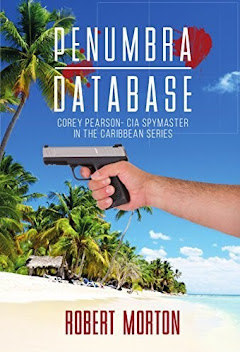 |
| CIA and FBI Hunt Russian Moles Stealing Quantum Tech |
They’re
not wearing trench coats or skulking through foggy alleys. Today’s Russian
spies are sipping lattes on college campuses, sitting in lectures, and walking
university quads with fake student IDs. And what they’re after isn’t just state
secrets—it’s the keys to the future: quantum computing technology tied
directly to America’s most sensitive CIA and NSA intelligence.
But here’s what Russia didn’t count on:
the CIA and FBI are very, very good at finding them.
Catching a modern Russian spy isn’t about
flashing a badge and kicking down doors. It takes sharp-eyed analysts, cyber
nerds, and surveillance teams who know exactly what to look for—like a sketchy
travel record, a résumé that doesn’t quite line up, or a “researcher” who
somehow never publishes a single paper. Those aren’t accidents. They’re tells.
And CIA pros like Spymaster Corey Pearson—the operative you’ll meet in Quantum Shadows—are
trained to sniff them out before the damage is done.
In Quantum Shadows, Corey
and his team are embedded at UC Berkeley, watching a campus that looks peaceful
on the surface. But their instincts tell a different story—one of strange
figures loitering by lab buildings, conversations that don’t add up, and
students being quietly targeted for classified research. Corey, Ana, and Brad
don’t need dramatic shootouts to do their job. They need patience, pattern
recognition, and the ability to slip into the shadows unnoticed.
When they spot a “tourist” who’s actually
a Russian agent using an expired visa, or intercept a slip of paper handed to a
grad student in exchange for classified lab notes, they know they’ve got
something real—and something dangerous.
This kind of infiltration is happening
right now in the real world.
Russia’s spy agencies—the SVR and
GRU—aren’t trying to bust into the Pentagon anymore. They’re just strolling
into university labs that are plugged into U.S. national security projects.
Places like MIT’s Lincoln Lab, the Joint Quantum Institute at Maryland, and the
Chicago Quantum Exchange are working side-by-side with the NSA and CIA to build
encryption tough enough to survive the quantum future. We’re talking about tech
that protects CIA field ops, secret comms, and the digital vaults packed with
America’s most classified intel.
So when a “visiting scholar” with a fake
background starts asking questions about encryption keys, or when a mysterious
investor offers cash for student research notes, red flags go up. The FBI and
CIA don’t just wait for someone to confess—they use advanced surveillance,
facial recognition, and financial tracing to uncover deep-cover operatives
hiding behind polished credentials. They bait suspects with controlled leaks.
They monitor comms for Russian-language slip-ups. They test cover stories under
pressure.
In one real-life case, SVR agent Evgeny
Buryakov posed as a banker in New York while secretly trying to recruit sources
in the tech sector. He never set foot in a lab, but he aimed to get intel from
those who did. The FBI nailed him by planting a fake white paper that he tried
to smuggle back to Moscow—proving just how easy it is to build a false legend,
and how sharp you have to be to crack one.
That same blend of quiet precision and
relentless digging plays out in Quantum Shadows when
Corey’s team spots a supposed photographer taking far too much interest in a
student from the university’s quantum physics lab. It’s Ana who connects the
dots—running facial recognition, checking immigration records, and realizing
the man isn’t who he says he is. When
Corey corners the student and learns she was offered “research funding” in
exchange for sensitive data, the mission shifts into high gear. This is what
spy-catching looks like now: whispers, algorithms, and instincts honed by years
in the field.
This isn’t just a high-stakes game—it’s the game. The prize? Everything. If Russian spies get their hands on post-quantum encryption before they’re deployed, they could crack into CIA archives, blow agent cover, and listen in on top-secret U.S. comms like it’s nothing. That’s why the NSA is racing to finish its CNSA 2.0 encryption system—and why it’s being tested in university labs that, let’s be real, are swarming with foreign eyes trying to get a peek.
The CIA and FBI know the game is changing.
It’s no longer about bombs or blueprints—it’s about math. And the first
side to master quantum computing won’t just have better tech. They’ll have
access. To secrets. To systems. To power.
In Quantum Shadows, Corey
Pearson puts it bluntly after spotting multiple Russian agents around campus:
“They’re embedding. Building a network. And they’re sloppy about it. Almost
like they think no one’s paying attention.” That’s the danger—when foreign
intelligence services get cocky, when they assume the open nature of U.S.
academia means no one's watching.
But someone is watching.
Whether it’s a counterintelligence team
tucked away in some plain building outside D.C. or agents quietly working a
college campus, the war’s already happening—and most people don’t even know it.
It’s not loud. It’s not flashy. It’s fought with sharp instincts, quiet
surveillance, suspicion, and the sharpest minds in intelligence.
Because in today’s digital battlefield,
protecting secrets isn’t enough. You’ve got to spot the spy before he
even gets close. These CIA and FBI teams? They’re the last line between
America’s most advanced quantum tech and the hands of foreign operatives dying
to steal it.
Robert Morton is a member of the Association of Former Intelligence Officers (AFIO) and an accomplished author. He writes the Corey Pearson- CIA Spymaster Short Story series, blending his knowledge of real-life intelligence operations with gripping fictional storytelling. His work offers readers an insider’s glimpse into the world of espionage, inspired by the complexities and high-stakes realities of the intelligence community.





No comments:
Post a Comment